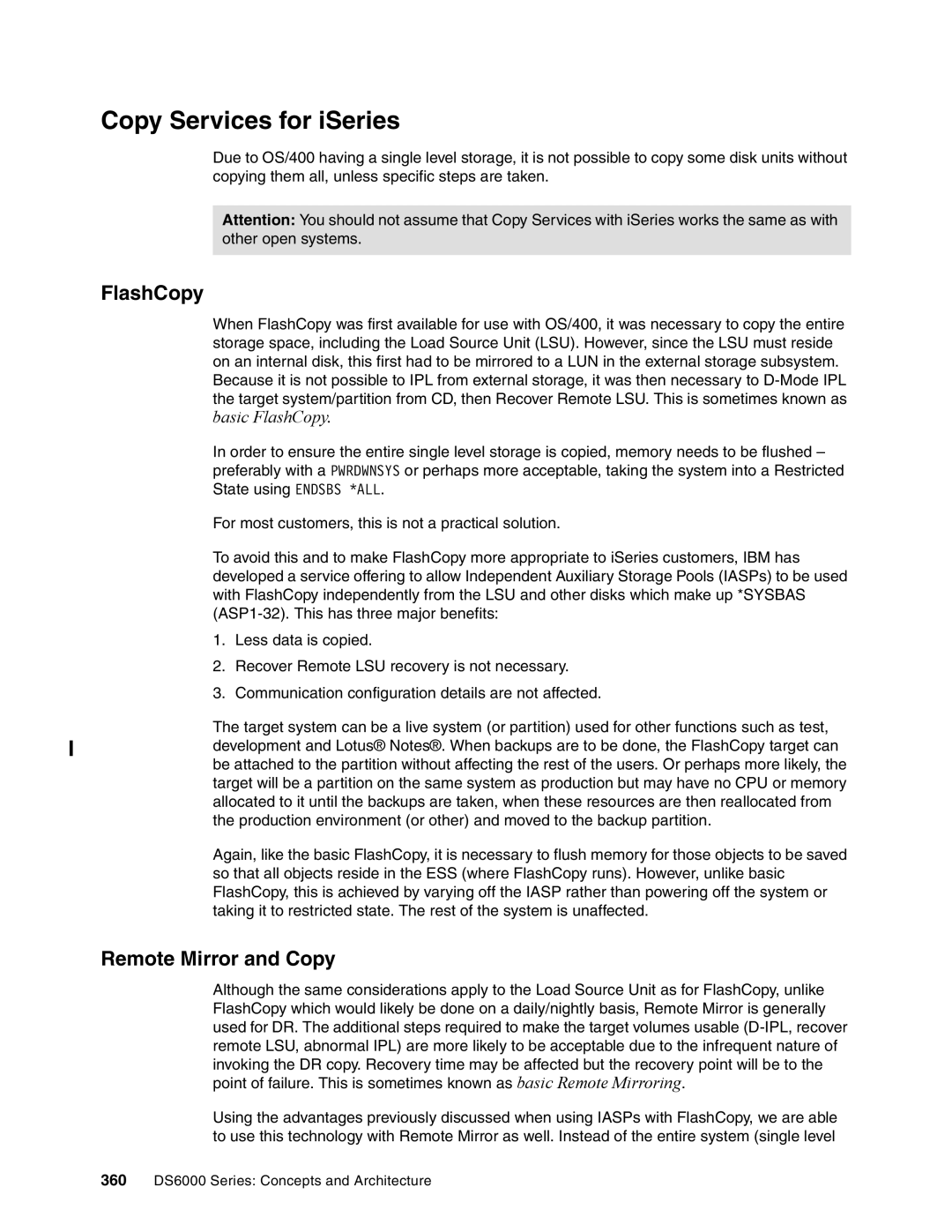
Copy Services for iSeries
Due to OS/400 having a single level storage, it is not possible to copy some disk units without copying them all, unless specific steps are taken.
Attention: You should not assume that Copy Services with iSeries works the same as with other open systems.
FlashCopy
When FlashCopy was first available for use with OS/400, it was necessary to copy the entire storage space, including the Load Source Unit (LSU). However, since the LSU must reside on an internal disk, this first had to be mirrored to a LUN in the external storage subsystem. Because it is not possible to IPL from external storage, it was then necessary to
the target system/partition from CD, then Recover Remote LSU. This is sometimes known as basic FlashCopy.
In order to ensure the entire single level storage is copied, memory needs to be flushed – preferably with a PWRDWNSYS or perhaps more acceptable, taking the system into a Restricted State using ENDSBS *ALL.
For most customers, this is not a practical solution.
To avoid this and to make FlashCopy more appropriate to iSeries customers, IBM has developed a service offering to allow Independent Auxiliary Storage Pools (IASPs) to be used with FlashCopy independently from the LSU and other disks which make up *SYSBAS
1.Less data is copied.
2.Recover Remote LSU recovery is not necessary.
3.Communication configuration details are not affected.
The target system can be a live system (or partition) used for other functions such as test, development and Lotus® Notes®. When backups are to be done, the FlashCopy target can be attached to the partition without affecting the rest of the users. Or perhaps more likely, the target will be a partition on the same system as production but may have no CPU or memory allocated to it until the backups are taken, when these resources are then reallocated from the production environment (or other) and moved to the backup partition.
Again, like the basic FlashCopy, it is necessary to flush memory for those objects to be saved so that all objects reside in the ESS (where FlashCopy runs). However, unlike basic FlashCopy, this is achieved by varying off the IASP rather than powering off the system or taking it to restricted state. The rest of the system is unaffected.
Remote Mirror and Copy
Although the same considerations apply to the Load Source Unit as for FlashCopy, unlike FlashCopy which would likely be done on a daily/nightly basis, Remote Mirror is generally used for DR. The additional steps required to make the target volumes usable
invoking the DR copy. Recovery time may be affected but the recovery point will be to the point of failure. This is sometimes known as basic Remote Mirroring.
Using the advantages previously discussed when using IASPs with FlashCopy, we are able to use this technology with Remote Mirror as well. Instead of the entire system (single level
360DS6000 Series: Concepts and Architecture
